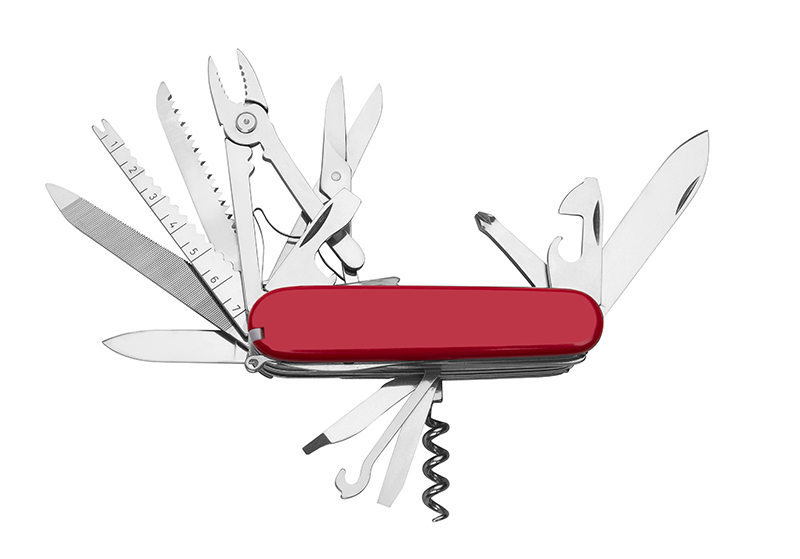UX Design Life-Cycle, Part 3: Define the Feature Set and Workflow
Background
We are a small team of talented creatives and developers, answering the question: “...tell us about your process or design principles.” We are going to do something more valuable: write about what has/has not worked.
KRUTSCH is posting a series of bite-sized articles that encapsulate a decade of experience leading the life-cycle of product design and user experience (UX), across a variety of industries, with clients both large and small.
This is Part 3: Define the Feature Set and Workflow.
The introductory post with links to the previous articles is here: UX Design Life-cycle, A Mini-Series.
Follow us on LinkedIn to see the next chapter in your feed.
Why Defining Feature Set and Workflow is Important
In our experience, a major hindrance to product usability is the wrong feature set and workflow.
This may mean too many unused features that clutter the user experience, making the system hard to comprehend. In other occasions, it may mean one or more key features are missing or are poorly implemented.
A correct, prioritized feature set and workflow is the first step to designing a winning customer experience.
Last week, we described how effective user research sparked the Eureka Moment; the realization that customers only used a handful of very basic features in a legacy product. It was eye-opening and the result was a decision to sharply tack-away from the legacy product's kitchen sink approach.
Sometimes, however, we need to go the other way and recognize when something is missing.
Today, we are designing an enterprise customer experience to allow prospects to browse our client’s services, then build and price a solution. We looked at competitive offerings, inside and outside the client’s industry. Soon, a mental model began to take shape: Build and Price Your Vehicle.
Anticipating Customer Wants and Needs
Car buying goes something like this: you browse web sites from the manufacturers, looking at the different models and features. Most auto vendors have very elegant sites that allow you to build a vehicle; first choosing a trim level (or package) and then selecting options like colors, individual features, whatever. Then, you may order on-line or, more typically, go to a car dealership to make your purchase.
The problem is this: YES, you can ASK for anything you want, but you can HAVE something that is actually on the lot (or inventory for on-line buying). Sure, you can custom order a vehicle from the manufacturer and wait 8 – 12 weeks for the vehicle of your dreams. Dealerships anticipate this causing disappointment by stocking vehicles that will likely fit their customer’s wish list. In Minnesota, where KRUTSCH is based, the Cold Weather Package is a must, along with All Wheel Drive.
So, away we went, designing our client’s customer workflow around a packages model. Easy right? Present LOW, MIDDLE, HIGH packages and, as any salesperson will tell you, the customer gravitates to the middle.
Then came the customer study, where we listened to dozens of recorded sales calls. Guess what? Another Eureka Moment.
The majority of prospects were coming to the client after a bad customer experience with a competitive vendor, looking to price shop the competition.
Our client has a well-earned reputation for outstanding customer service, so what’s left to do? Enable an apples-to-apples comparison of features and price, rather than boxing the customer into pre-determined packages. That meant designing a customer workflow entirely around building a solution that closely matches a competitor’s offering – unlike the packages model – and something that differs from the on-line ordering experience of our client’s competitors.
Lesson Learned – The Main Success Scenario
Here’s the important point: customer research and workflow analysis go hand-in-hand. Workflow analysis strives to diagram the ideal series of steps your customers take to achieve an end-goal. In the above example, the end-goal for the customer is to perform an honest, apples-to-apples comparison of vendors.
Of course, the client’s end-goal is to close a sale, but the main success scenario for our client is to educate their prospects and customers on features, services, and pricing, through an on-line exploratory tool.
Identifying the main success scenario is the key element of effective user experience design.
Once you have identified your main and secondary success scenarios, you create a simplified workflow, focusing on the user experience, with a prioritized task list specific to those scenarios.
Because everything else is just a fish scaler…
“Fish scaler: Although the fish scaler is used by many fishermen to scale fish, it’s often derided as one of the least useful tools in this model. However, there are other uses for the fish scaler, including carving pumpkins.”
Workflow: A Framework
Unearthing the right workflow takes a combination of planning and insight. We have used variations on the following outline.
REQUIREMENTS GATHERING
The first step in the process is basic requirements gathering. This can be accomplished with informal workshop sessions with key stakeholders. The primary outcome from this step is to document the high-level requirements for the product or service.
A secondary outcome is to educate the design team on the problem domain. No one can intelligently interview or observe customers without having a basic understanding of the problems addressed by the product or service.
We covered this critical step in an earlier post, as part of this series:
Customer / End-User Interviews
The next step is to talk with customers. For a new product or service idea, this can mean informal interviews. For an existing product, this is best done by direct observation, in the field.
We covered this critical step in an earlier post, as part of this series:
After learning about the problem domain, and interviewing/observing customer and end-users, it is time to tell their stories. What problems are your customers trying to solve? How are they going about this today? What would they do without your product or service (this is an important one)? How are your competitors helping their customers?
You can document these with simple text outlines, like a script or short stories. You can also use diagramming software to capture these anecdotes in a manner that encourages the team to reuse and expand on the portrayed journey. The tools we use for workflow are described here.
Develop Main Success Scenarios and a Prioritized Task List
The main success scenario comes to light when you ask the question: how do we want to change the story?
Selecting the user scenarios that are most import to furthering the aims of the product or service become the main and secondary success scenarios. From there, build a set of use cases (actions or events) that support these scenarios. Prioritize these use cases and you have your task list.
For the client anecdote described earlier, the story change desired was “decision simplicity”—the ease with which customers can gather trustworthy information about a product and confidently and efficiently weigh their purchase options, all without a sales call, transparently presented on-line. It builds stickiness with existing customers and fosters trust with prospects.
End Note
In our upcoming post, Part 4, Choose Design Patterns and Sketch Out A Story, we will demonstrate our workflow design process in more detail.
Follow us on LinkedIn to see the next chapter in your feed.
Ken Krutsch is Founder & Managing Principal of KRUTSCH, a digital product design firm, specializing in commercial product vision and realization, including customer research, roadmap development and full-stack user experience design.
Follow KRUTSCH on LinkedIn to read the follow-up posts in the series.




